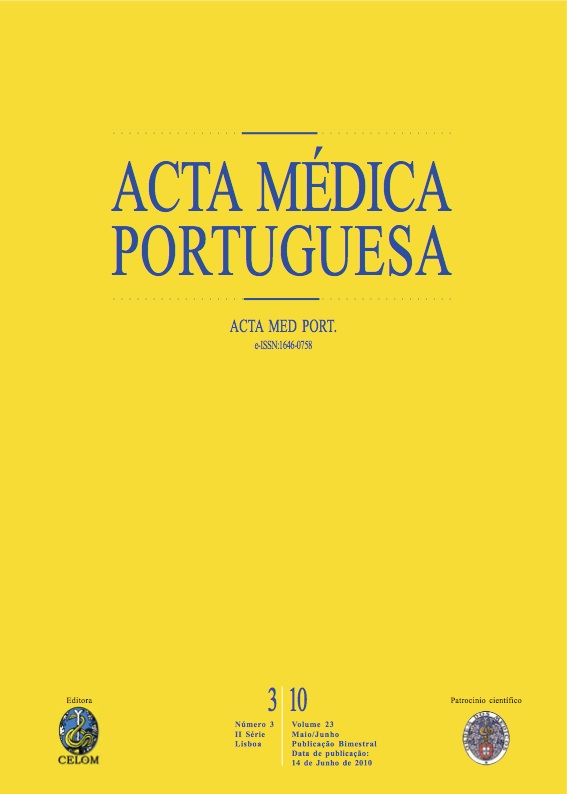Doença invasiva por Streptococcus pyogenes num hospital pediátrico - 1996-2009.
DOI:
https://doi.org/10.20344/amp.642Resumo
S. pyogenes is among the most common bacteria in Pediatrics, and is associated with a wide variety of infections and large range of severity.The aim was to evaluate trends of Group A Streptococcal invasive disease in a paediatric tertiary hospital.Retrospective analyses of the medical records of all children with group A streptococcal invasive disease (positive culture obtained from sterile sites), from January 1996 to December 2009 (14 years).There were 24 cases, with a maximum of four cases/year. Eighteen cases (75%) ocurred in the second half of the study. Sixty-seven percent were boys and the median age was three years. The most frequent clinical manifestations were fever (79%), rash (54%) and arthalgia/limbs' pain (46%). The diagnoses were bacteriemia (six), osteoarticular infection (five), celulitis (three), pyomyositis, mastoiditis, surgical wound infection, toxic shock syndrome (two each), necrotizing fasciitis and pneumonia (one each). Four cases occurred during the course of varicella. Other risk factors were present in six cases. Median neutrophyl count was 10.690 x 105/L (2.013-19.180 x 105/L) and median C reactive protein was 146 mg/L (3-425 mg/L). Bacteria were isolated mainly from blood (71%). The outcome was good for most cases but there were two deaths due to toxic shock syndrome. M typing and the presence of virulence factors genes were not assessed.Although the number is small, there was an increase of S. pyogenes invasive disease in the second half of the study. Several cases occurred in the course of varicela or in the presence of other risk factors. Fatal outcome was associated with two toxic shock syndrome cases. Microbiological investigation is essential to understand which M types or virulence factors genes are involved.Downloads
Downloads
Como Citar
Edição
Secção
Licença
Todos os artigos publicados na AMP são de acesso aberto e cumprem os requisitos das agências de financiamento ou instituições académicas. Relativamente à utilização por terceiros a AMP rege-se pelos termos da licença Creative Commons ‘Atribuição – Uso Não-Comercial – (CC-BY-NC)’.
É da responsabilidade do autor obter permissão para reproduzir figuras, tabelas, etc., de outras publicações. Após a aceitação de um artigo, os autores serão convidados a preencher uma “Declaração de Responsabilidade Autoral e Partilha de Direitos de Autor “(http://www.actamedicaportuguesa.com/info/AMP-NormasPublicacao.pdf) e a “Declaração de Potenciais Conflitos de Interesse” (http://www.icmje.org/conflicts-of-interest) do ICMJE. Será enviado um e-mail ao autor correspondente, confirmando a receção do manuscrito.
Após a publicação, os autores ficam autorizados a disponibilizar os seus artigos em repositórios das suas instituições de origem, desde que mencionem sempre onde foram publicados e de acordo com a licença Creative Commons









